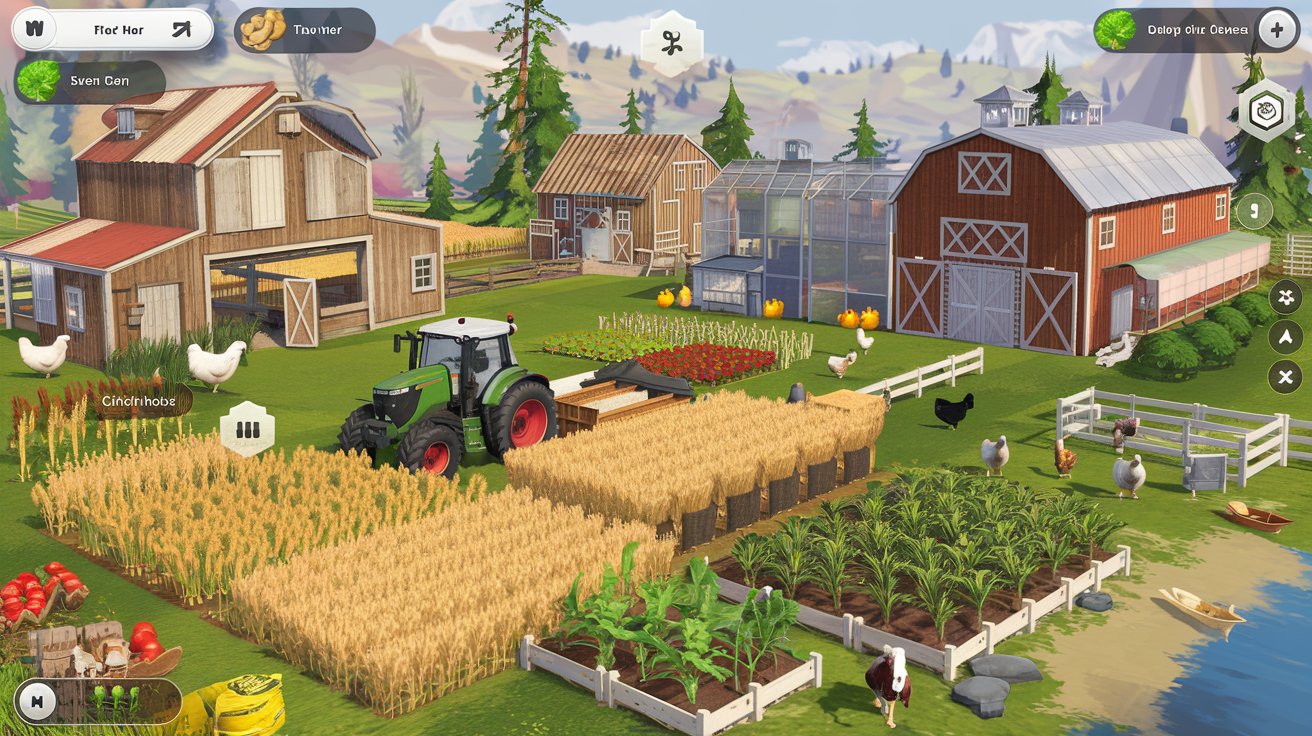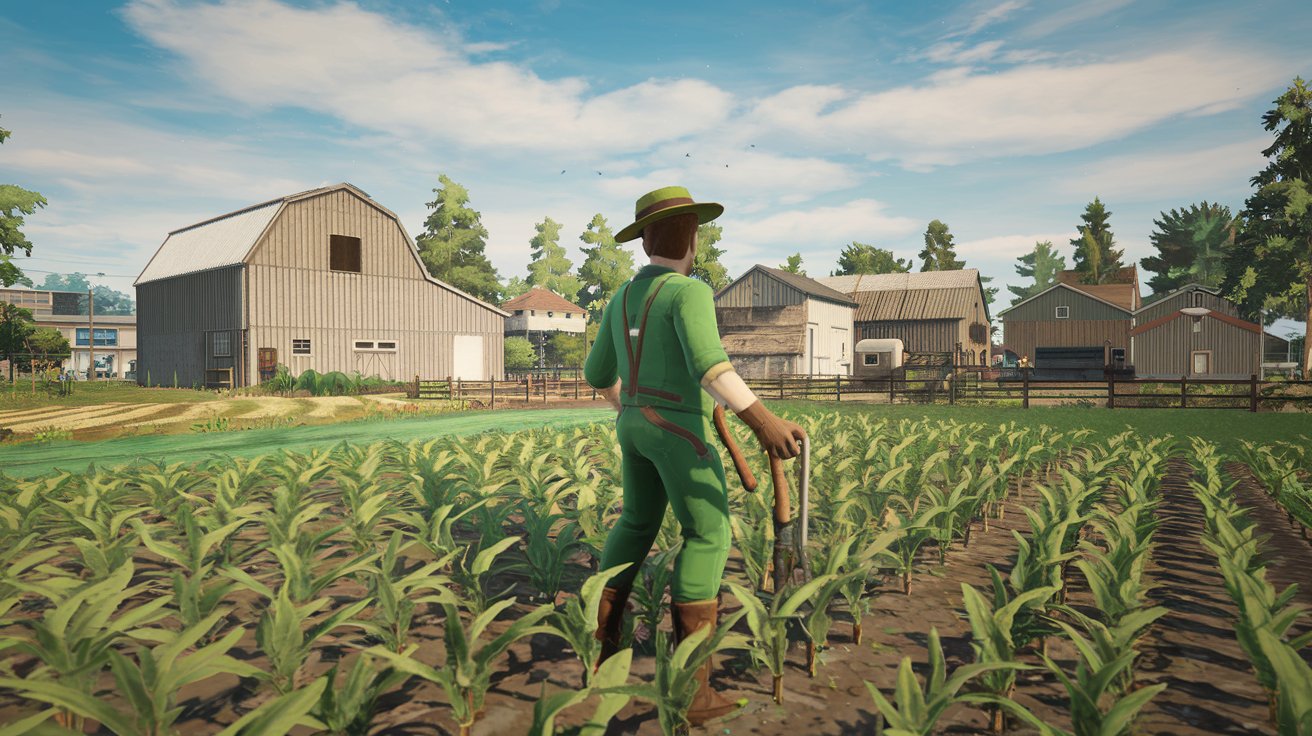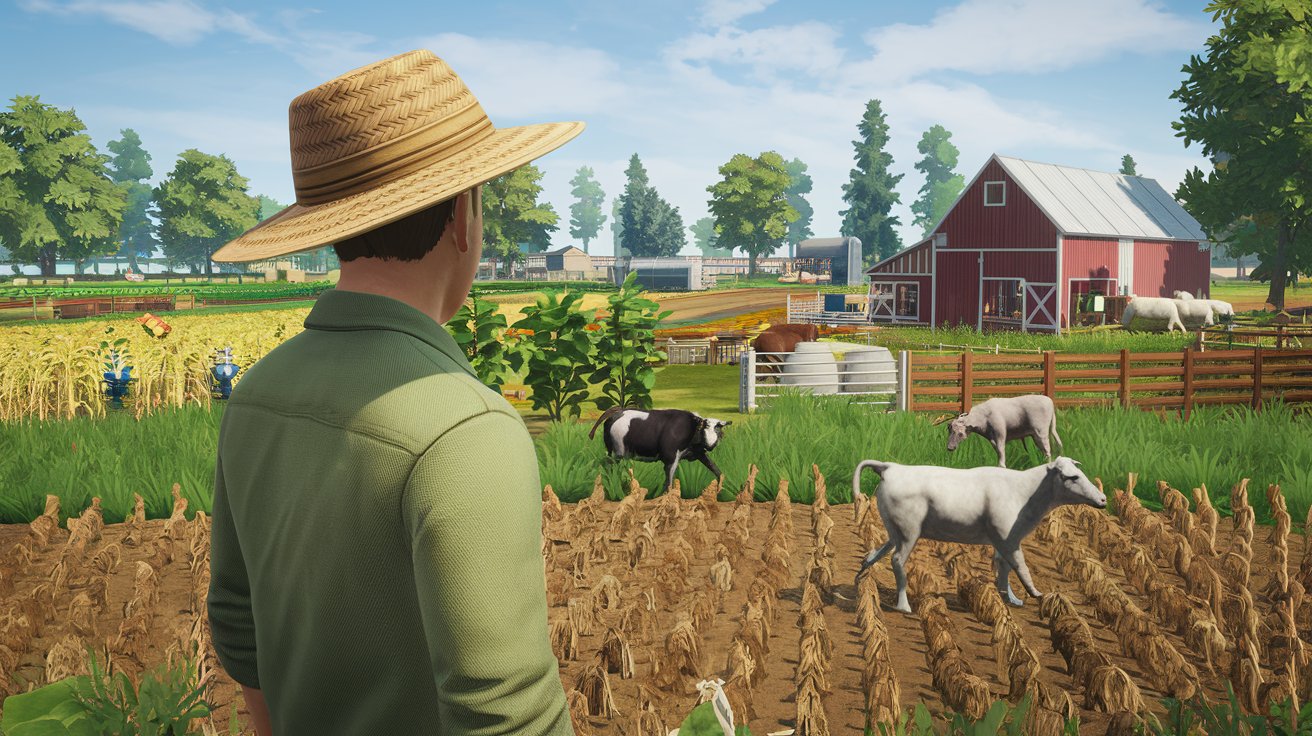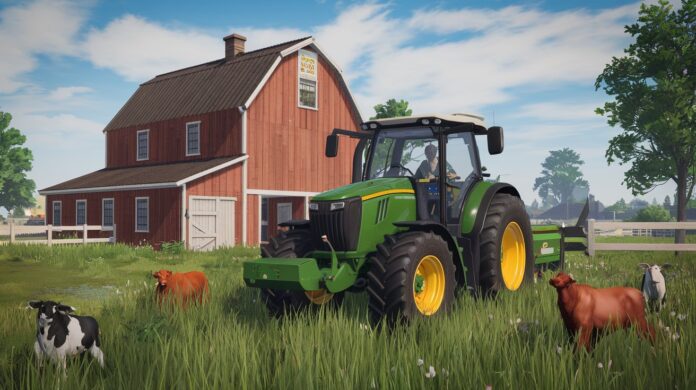Farming simulation games have taken the gaming world by storm, offering players a chance to escape into a peaceful, pastoral life where they can cultivate crops, raise animals, and build thriving farms from the ground up. Whether you’re tending to virtual fields in Stardew Valley, managing heavy machinery in Farming Simulator, or crafting a cozy homestead in My Time at Portia, these games blend relaxation with strategy, making them irresistible to millions. Beyond their charm, they teach valuable lessons about patience, planning, and resource management—skills that can even translate to real-world endeavors.
In this blog, we’ll dive into the world of farming simulation games, exploring how they work, why they’re so captivating, and how you can master them to create the best farm possible. From choosing the right crops to expanding your empire, we’ll cover everything you need to know to succeed in these delightful virtual landscapes. Let’s grab our pitchforks and get started!
What Are Farming Simulation Games?
Farming simulation games put you in the boots of a farmer, tasking you with growing crops, raising livestock, and managing a farm’s daily operations. These games range from realistic simulators like Farming Simulator 2022, where you operate tractors and harvesters, to whimsical adventures like Stardew Valley, where you can fish, mine, and even fall in love. Other titles, such as Harvest Moon or Farm Together, add their own unique twists, blending farming with storytelling or multiplayer fun.
At their heart, these games are about progression. You start with a modest plot of land and a few tools, then work your way up to a sprawling farmstead bursting with life. Along the way, you’ll face challenges like unpredictable weather, tight budgets, and time management—all while chasing the dream of building the ultimate farm.
Why Farming Simulation Games Are So Addictive

What keeps players hooked on these games? It’s a mix of satisfaction, creativity, and challenge. Here’s why they’re so hard to put down:
- Sense of Accomplishment: Watching your first harvest come in or your barn fill with livestock feels incredibly rewarding.
- Creative Control: Design your farm your way—plant vibrant flower beds, build sprawling pastures, or create a high-tech operation.
- Relaxing Pace: Unlike fast-paced shooters, farming sims offer a soothing rhythm that’s perfect for unwinding.
- Endless Possibilities: With seasons, upgrades, and new goals, there’s always something to strive for.
This blend of tranquility and purpose makes farming simulation games a unique escape—and a perfect training ground for building your dream farm.
Key Elements of Building the Best Farm
To create a standout farm in any simulation game, you need to master a few core principles. Let’s break them down:
1. Time Management
Farming is all about timing. Plant crops too late, and they won’t mature before winter; neglect your animals, and they’ll stop producing. Games like Stardew Valley use a day-night cycle, forcing you to prioritize tasks efficiently.
Real-World Takeaway: Success comes from balancing priorities and staying disciplined.
2. Resource Management
Money, seeds, water, and energy are your lifeblood. Overspend early, and you’ll stall your growth; hoard too much, and you’ll miss opportunities. Finding the sweet spot is key.
Real-World Takeaway: Budget wisely and invest in what drives progress.
3. Crop and Livestock Selection
Not all crops or animals are equal. Some, like strawberries in Stardew Valley, yield high profits but take time to grow, while chickens offer steady income with minimal effort.
Real-World Takeaway: Diversify your income streams and focus on high-return investments.
4. Expansion and Upgrades
A great farm grows over time. Reinvesting profits into better tools, bigger fields, or automated systems (like sprinklers or silos) boosts efficiency.
Real-World Takeaway: Scale sustainably and upgrade strategically.
5. Aesthetics and Functionality
A top-tier farm isn’t just productive—it’s beautiful. Arrange your fields, fences, and buildings to maximize space and create a visually stunning layout.
Real-World Takeaway: Presentation matters. A well-designed operation attracts attention and pride.
How to Play Farming Simulation Games Like a Pro

Ready to build the best farm? Here’s a step-by-step guide to mastering the genre and creating a virtual masterpiece.
Step 1: Start Small and Learn the Basics
Every farming sim has a learning curve. Begin with the tutorial or starter tasks—plant a few crops, feed some animals, and get a feel for the mechanics. In Farming Simulator, this might mean mastering a tractor; in Stardew Valley, it’s clearing your overgrown plot.Pro
Step 2: Set Clear Goals
What’s your vision? A high-tech grain empire? A cozy animal sanctuary? Define your endgame—whether it’s earning a million gold or unlocking every upgrade—and break it into milestones.
Step 3: Prioritize High-Value Crops
Research which crops or products pay off. In Stardew Valley, blueberries and cranberries are goldmines; in Farming Simulator, soybeans or silage can rake in cash.
Step 4: Care for Your Animals
Livestock can be a game-changer. Chickens, cows, and pigs provide eggs, milk, and meat—but they need food, water, and attention. Happy animals produce more.
Step 5: Expand Smartly
Once you’ve got steady income, grow your farm. Buy more land, upgrade tools (e.g., from a hoe to a sprinkler), and diversify with orchards or fisheries.
Step 6: Master the Seasons
Most farming sims have seasonal cycles. Plant crops that thrive in spring or summer, and prep for winter by stockpiling resources or switching to indoor tasks.
Step 7: Optimize Your Layout
A great farm is efficient and beautiful. Plan pathways, group crops by type, and leave room for future growth. In Farm Together, symmetry can even boost productivity.
Step 8: Experiment and Have Fun
Try quirky strategies—like an all-pumpkin farm or a sheep-only operation. Farming sims reward creativity, so don’t be afraid to play your way.Pro Tip: Failure’s just fertilizer for success—learn and adapt.
Top Farming Simulation Games to Play in 2025
Ready to dig in? Here are some must-try titles to test your farming skills:
- Stardew Valley
A charming indie gem where you inherit a farm, grow crops, raise animals, and build a life in a vibrant town. - Farming Simulator 2022
The ultimate realistic farming experience—drive tractors, harvest fields, and manage a modern agricultural business. - Harvest Moon: One World
A classic series with a focus on farming, crafting, and heartwarming stories. - Farm Together
A colorful, multiplayer-friendly sim where you can collaborate to build stunning farms. - My Time at Portia
Blend farming with crafting and exploration in a post-apocalyptic world rebuilding itself.
Each game offers a unique flavor of farming fun, perfect for honing your skills and unwinding.
Translating Virtual Farming Skills to Real Life

Farming simulation games aren’t just entertainment—they’re packed with lessons for real-world success. Here’s how to apply what you’ve learned:
- Plan Strategically: Like plotting crop cycles, set goals and timelines for personal or business projects.
- Manage Resources: Budgeting in-game mirrors managing finances or time in reality.
- Adapt to Change: Seasonal shifts teach resilience—pivot when life throws curveballs.
- Find Joy in Progress: Small wins, like a bountiful harvest, remind you to celebrate milestones.
- Work Smarter: Automation and upgrades show the value of efficiency tools in daily life.
For instance, a Farming Simulator pro might excel at logistics in a real job, while a Stardew Valley veteran could apply patience and multitasking to entrepreneurship.
Why Farming Sims Matter in 2025
As of April 07, 2025, farming simulation games are more relevant than ever. With sustainability and self-sufficiency trending, these games tap into a growing interest in agriculture and rural living. They also offer a digital detox from fast-paced urban life, aligning with 2025’s focus on mental wellness and balance. Plus, their emphasis on planning and adaptability prepares players for a world of economic shifts and technological innovation.
Whether you’re a gamer or an aspiring farmer, these sims provide a low-stakes way to explore big ideas—and have a blast doing it.
Final Thoughts: Cultivate Your Dream Farm
Farming simulation games invite you to slow down, get your hands dirty, and build something extraordinary—one seed at a time. By mastering time management, resource allocation, and creative design, you can craft the best farm in any virtual world. And who knows? The skills you pick up might just inspire you to start a garden, launch a business, or simply appreciate the beauty of growth.
So, fire up your favorite farming sim, plant your first crop, and watch your empire flourish. The fields are calling—will you answer? Your perfect farm is waiting to bloom.

Zareb Saleh is a journalist at Gulf Today and a ghostwriter for Gameoholic, specializing in gaming, technology, and digital culture. With a keen eye for industry trends, he delivers insightful stories that engage and inform readers.




